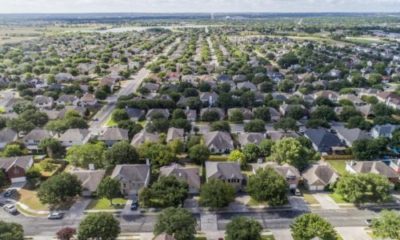
Despite 24/7 media coverage of the global pandemic, stay-at-home orders in effect, and concerns on the rise from community groups, the Austin real estate market is continuing to display a positive outlook for the weeks and months to come. Polls taken by Point2 Homes indicate an even brighter forecast for Austin than we initially anticipated, with only 12% of prospective homebuyers planning to extend their home-buying timeline into the distant future. The second question from the poll, as seen in the image below, showcases the results.
Austin economic predictions are among the most promising nationwide, featuring a 2.2% year-over-year home sale increase in March, as reported by the Austin Board of Realtors® (ABoR). The median home price for residential real estate made a 12.8% increase this March. A combination of low supply with strong demand has fueled home price growth and is contributing to Austin’s real estate market durability.
Even if Austin were to experience a dip, housing experts predict a “noticeable rebound” during the summer months for home prices. By Spring of 2021, experts predict “full normalcy” as the subsequent waves of Coronavirus begin to subside. Additionally, some experts are even predicting expedited growth as a result of the desirability/ affordability of Austin (caused by strong job prospects).
Although the immediate future may come with a host of acute market drops and volatility, several critical factors are responsible for the optimistic dynamics that are expected to sustain Austin home prices. Among them are “tech titans” moving into Austin, aggressive demand from buyers, virtual/ 3D touring technology, comparative affordability, and an uptick in online viewing statistics. The following sections of this article will explore each factor in detail, providing a comprehensive outlook for anyone with future intentions to buy a house in Austin.
Tech Titan Integration
With “Silicon Hills” on the fast track to growth, jobs in Austin are expected to increase in quantity while paying higher salaries. Among the many offices in Austin are eBay, Intel, Texas Instruments, VMWare, Facebook, Cisco, Apple, Amazon, Indeed, Oracle, and Google, to name a few.
With a surge of high-tech startups that boast large profit-potential, Austin’s economic forecast is bright to say the least. The combination of tried and true technology giants with promising start-ups forms an optimal setup for survivability and growth during (and in the weeks/ months) after the pandemic.
Lastly, employment data is traditionally one of the most accurate measures of future real-estate prospects. In Austin, accelerated construction, population growth, and job opportunities are quintessential indicators of future growth.
Aggressive Buyer Demand
A combination of low-interest rates and traditional competition in Austin are fueling new home purchases, keeping pace with typical trends despite the pandemic. As a result, home prices are maintaining value in Austin despite the negative impacts COVID-19 has dealt to similar metropolitan areas within the U.S.
With a reputation as one of the hottest markets for real estate in the United States, Austin is maintaining its record high home prices that were beginning to stabilize in 2020. The continuation of the seller market is a result of low inventory with an unprecedented level of demand from interested buyers. Strong area fundamentals are expected to be a driving force for home-price maintenance in Austin while lending way to a quick recovery should the housing market take a dip.
Virtual/ 3D Touring Technology
Countless businesses have shifted to virtual offices made possible by software such as Zoom, GoToMeeting, and Skype. The real estate industry in Austin is no exception.
With virtual tours that recreate physical spaces, buyers are establishing a newfound trust in the ability of technology to provide an accurate 3D experience. VR headsets, photo walk-throughs, live realtor video calls, and clickable 3D models are paving the way for a new wave of buying decisions.
The technological improvements necessitated by distancing requirements are even encouraging out-of-state buyers to jump in as we progress beyond the spring real estate season.
Metropolitan Comparative Affordability
Austin’s relative affordability, when compared to major metropolitan centers nationwide, is among the most competitive, boasting “one of the lowest state and local tax burdens in the nation” and a competitive regulatory environment as reported by Austin Chamber.
Once the global pandemic subsides, Austin may even experience a large increase in demand from individuals and businesses alike who are seeking relocation to an area that has lower costs-of-living.
Online Viewing Uptick [Stats]
Zillow, the largest online real estate, apartment, mortgage, and home value database, features promising statistics for the Austin housing market while indicating strong future prospects. According to Zillow’s page-view data, Austin has experienced a 35% year-over-year increase in activity – a testament to the continuation of buyer and seller interest.
The data suggests that homeowners and investors alike plan to resume their efforts upon the termination of the quarantine period.
Despite Uncertainty, Austin Real Estate Maintains Strong Market Fundamentals
Although the U.S. economy has sustained substantial damage resulting from the global COVID-19 pandemic, Austin Texas remains in an optimal position for sustained real estate performance and growth. Indications derived from Zillow’s page-view data, affordability statistics (comparatively to national averages), the influx of 3D touring tech improvements, sustained buyer demand, and technology giant integrations are driving the relative stability of Austin’s real estate market.
For market updates and the most accurate real estate forecasts, please visit our blog. If you have any questions about the Austin real estate market or the relocation process, please reach out to us. Our contact page is an excellent way to get in touch or feel free to give us a call at (512) 481-8811.

